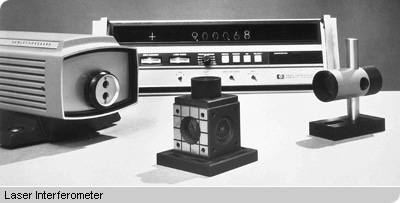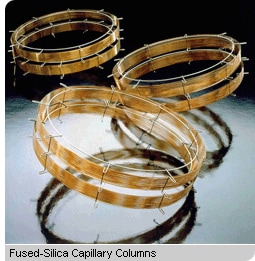Company History Timeline — 1970s
The company continues its tradition of innovation. As this decade—marked by significant growth in earnings and employment—draws to a close, Bill Hewlett and Dave Packard delegate day-to-day operating management of the company to John Young.
1970
- Automatic microwave network analyzer is introduced—an indispensable tool for the design and manufacture of microwave systems.
- Net Revenue: $365 million; Employees: 16,000.
1971
- Work with lasers produces a laser interferometer capable of measuring to millionths of an inch. The laser interferometer, known as “the jewel in Agilent’s crown,” is still the tool of choice in microchip manufacturing. Similar technology produces a laser instrument that becomes the first electronic surveying tool.

1973
- First chemical analysis system controlled by a microprocessor provides simplified operation and improved results.
- Logic analyzer becomes the tool of choice for engineers in the fast-growing field of digital electronics.
1975
- The introduction of a standard digital interface system simplifies instrument systems. The electronics industry adopts the HP IB (Interface Bus) as an international standard. This allows up to14 instruments per bus to connect easily to a computer. HP-IB and HP programming language make off-the-shelf test systems possible.
1977
- John Young is named president (appointed CEO in 1978).
1979
- First integrated microprocessor development system combines all the tools needed by hardware and software engineers.
- Development of fused-silica capillary columns simplifies
chemical analysis and allows more compounds to be analyzed.
- New diode-array detector for chemical analysis provides rapid results by measuring multiple wavelengths of light simultaneously.